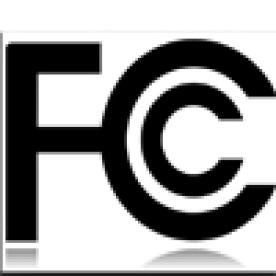On July 10, 2019, the FCC adopted a Notice of Proposed Rulemaking (NPRM) and Declaratory Ruling that focuses on access and marketing agreements for fixed broadband, video, and voice services (Triple Play Agreements) negotiated by cable companies, telcos, other fixed broadband services providers and developers, and owners of multiple dwelling units (MDUs).
The NPRM also raises questions regarding rooftop leases and distributed antenna system (DAS) agreements between wireless carriers and, sometimes, third-party DAS operators, and developers and owners of MDUs and commercial properties, collectively referred to as multi-tenant environments (MTEs). A DAS is an in-building antenna network designed and deployed to distribute wireless carriers’ signals throughout the property.
The Declaratory Ruling is more controversial and, potentially, more consequential. The ruling preempts a San Francisco ordinance (“Article 52”) that requires sharing of in-use MDU wiring used for the distribution of broadband services to the building’s residents. When a draft of the ruling was released in June, the House of Representatives approved an amendment to an appropriations bill that would prohibit the FCC from “finalizing a draft declaratory ruling that would overturn local ordinances that promote broadband competition.” Nonetheless, the agency moved forward.
Declaratory Ruling
As paraphrased by the FCC, San Francisco’s Article 52 prohibits a building owner from “‘interfer[ing] with the right of an occupant to obtain communications services from the communications services provider of the occupant’s choice,’ and provides that an owner so interferes by refusing to allow a communications services provider to (1) ‘install the facilities and equipment necessary to provide communications services,’ or (2) ‘use any existing wiring to provide communications services as required by this Article 52.’”
The decision to preempt Article 52 is consistent with recent FCC decisions promoting facilities-based competition, investment in broadband infrastructure, and limiting facilities-based services providers’ obligations to grant competitors access to their facilities. The FCC’s logic is straightforward.
“Rather than promoting access to buildings and customers, Article 52 requires building owners to share existing facilities. And the forced sharing of in-use facilities reduces incentives for incumbent providers and building owners to invest in shared infrastructure and encourages providers to take advantage of existing infrastructure rather than building their own. These deleterious outcomes would frustrate the policies the Commission sought to achieve in the [prior] MTE orders, and this fact informs our decision to preempt in-use wire sharing.”
On the other hand, the preemption in the Declaratory Ruling is limited as it does not foreclose state and local laws that “promote facilities-based broadband deployment and competition in MTEs so long as the efforts do not contravene” FCC rules and policies. The FCC emphasizes it is not preempting cable mandatory access laws that establish “a legal right to install and maintain cable wiring in MDU buildings, even over an MDU owner’s objections,” leaving the door open for state and local governments to enact similar statutes to support broadband deployments in MTEs.
Notice of Proposed Rulemaking
Triple Play Agreements
The NPRM poses a series of questions regarding exclusive marketing and revenue sharing provisions in Triple Play Agreements. These include the largest services providers – Comcast, Verizon, Charter, AT&T, and others – regional services providers such as Wave, and services providers focused on off-campus student housing.
In 2010, the FCC found these agreements and bulk billing agreements to be in the public interest, but retained longstanding rules prohibiting services providers from demanding “exclusive access agreements” with MDUs.
An extensive record developed in response to the 2017 Notice of Inquiry confirms these arrangements support the buildout of sophisticated inside wiring systems and that the prevalent practice in newbuilds is for developers to install spare conduit and pathways to support inside wiring systems of multiple services providers.
It is unlikely industry practices, recognized benefits, and underlying interests have changed noticeably, if at all, since 2017. Moreover, many MDU industry arguments cited favorably in the Declaratory Ruling support continuation of policies affirmed by the FCC in 2010.
Distributed Antenna Systems
Another aspect of the NPRM reflects T-Mobile’s position that the FCC should review exclusive access provisions in rooftop leases and potential “monopoly rents” extracted for access to in-building distributed antenna systems (DAS). 1 Exclusive of matters related to the Over the Air Reception Device (OTARD) statute, this may be the initial instance in which the FCC has raised questions regarding the rates, terms, and conditions of DAS agreements or rooftop leases.
DAS are deployed in public buildings, airports, railroad terminals, convention centers, stadiums and arenas, as well as in MDUs and commercial properties. In the larger venues, a third-party operator negotiates with the venue operator for the rights to install the DAS, paying the venue operator a fee, and then leases access to the DAS wireless carriers. These track the arrangements between wireless carriers and aboveground tower operators.
This is not the case in the MTE environment, particularly in MDUs. Typically, the developer or owner invests in the DAS looking for the wireless carriers to extend their networks to the building and connect to the DAS to enable wireless connectivity throughout the building. In countless forums and conferences, the major wireless carriers have stated they lack the resources and will not extend their network facilities into all buildings even if the developer or owner commits to installing and maintaining a neutral host DAS. Hopefully, comments submitted in response to the NPRM will describe the real-world challenges confronting MTE developers and owners regarding inbuilding wireless connectivity.
Rooftop Leases
Interest in rooftop leasing varies among MTE developers and owners. Rooftops are not routinely constructed to support wireless infrastructure that accommodates one or more wireless carriers’ facilities. Moreover, rooftops are proving increasingly valuable as tenant common areas. At most, the FCC should limit wireless carriers from demanding exclusivity in rooftop lease agreements. Privately-owned MTEs should retain their longstanding discretion whether to lease rooftop space in the first place, whether to one wireless carrier or to all wireless carriers. A lease with one wireless carrier should not establish a presumption supporting access rights for other wireless providers. Bottom line, the FCC should not immerse itself into negotiations related to wireless rooftop leases on privately owned MTEs.
In a deregulated telecommunications environment in which wireless and wireline carriers are free to charge marketplace rates, regulatory oversight of the transactions between these services providers and operators of privately-owned MTEs is inappropriate. This is particularly true in the case of wireless services providers that are unwilling to assume the obligation to meet the inbuilding connectivity of MTE owners and tenants.




 i
i


